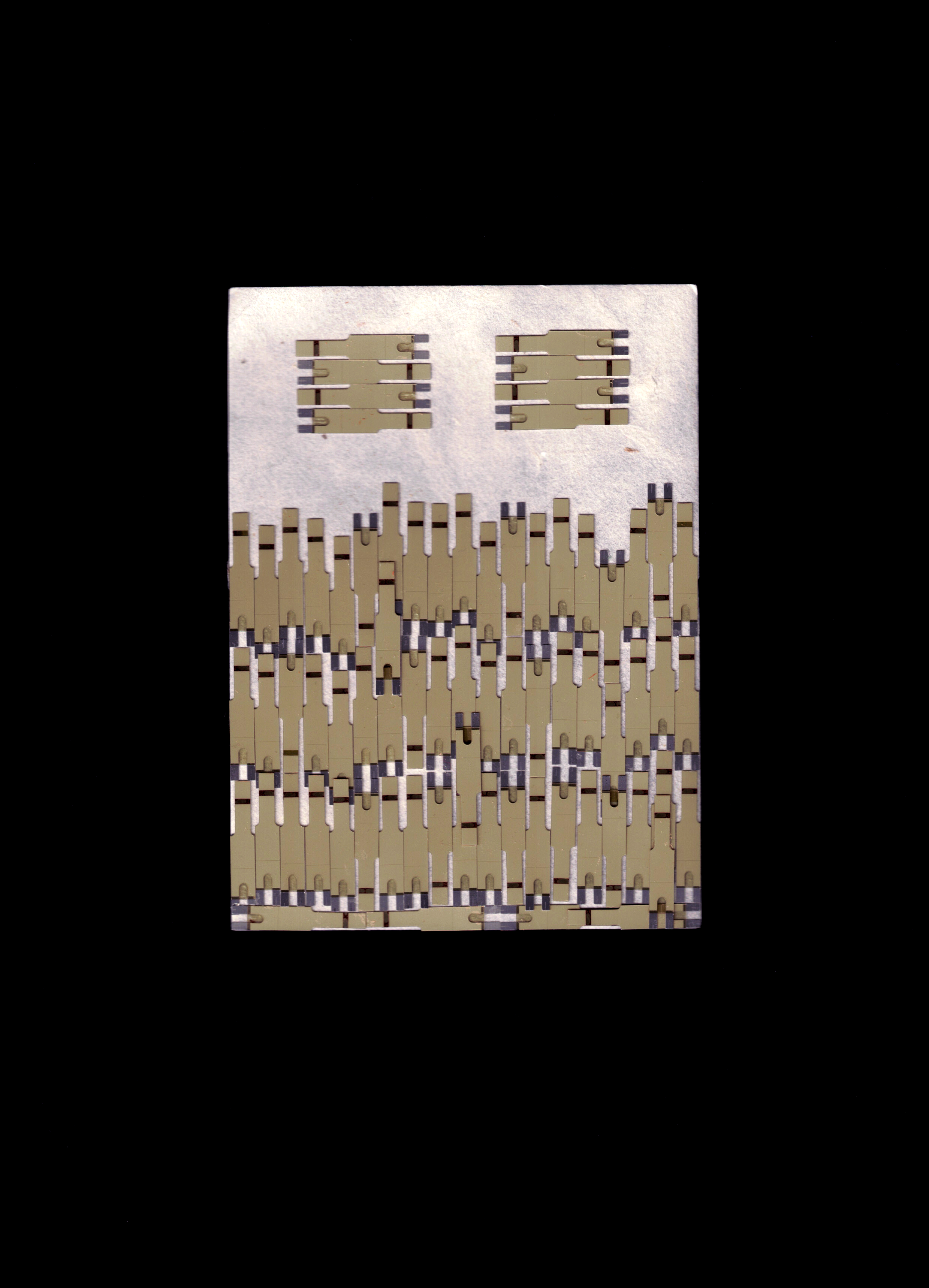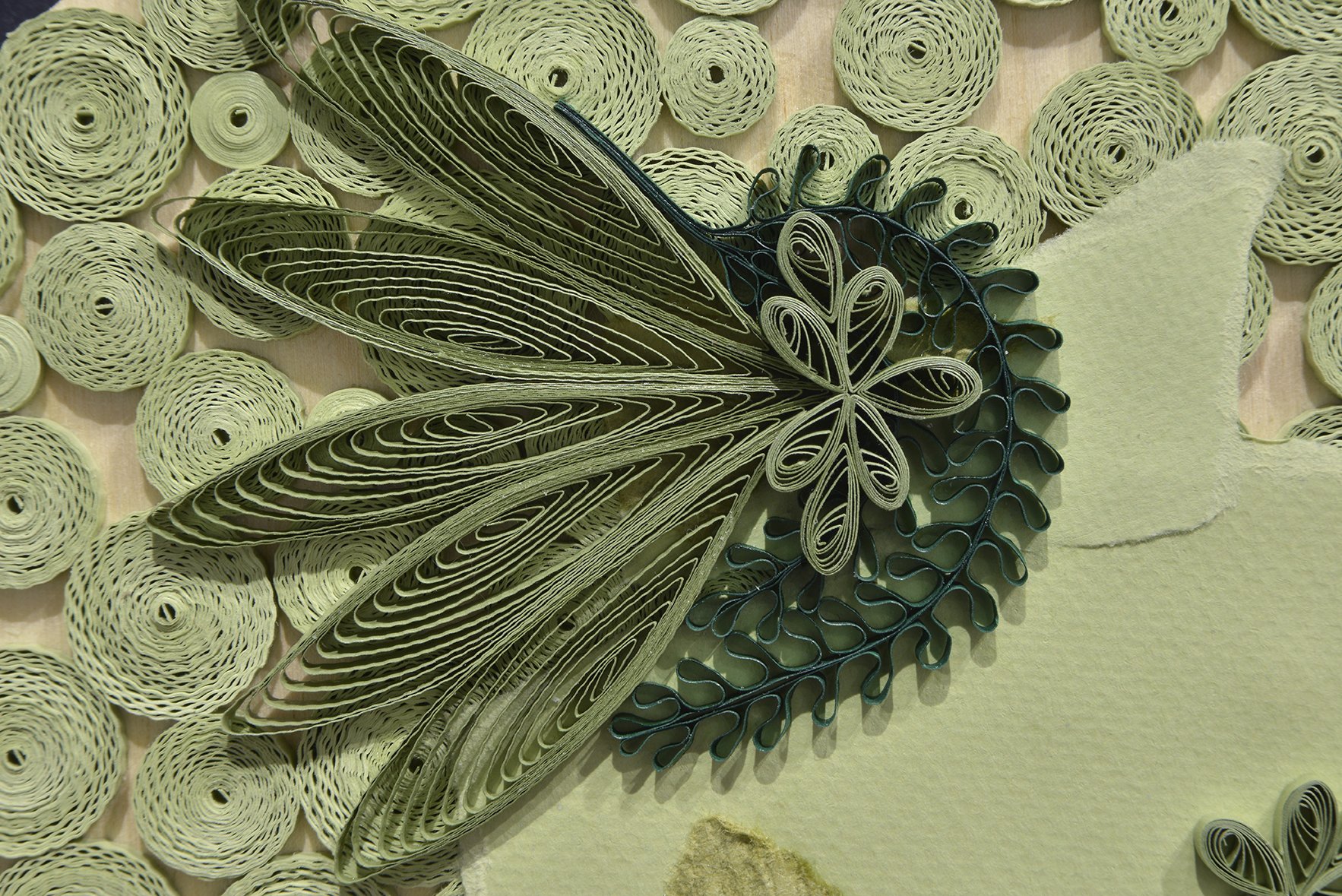Bedscapes was part of the group exhibition, “Care,” at the Art Gallery of Regina from October 30, 2025-January 11, 2025.

Diagnosis Bed Triptych (I)

Diagnosis Bed Triptych (II)

Diagnosis Bed Triptych (III)
Letting the Light In (Left)
Tending (Right)
Photos by Don Hall
Bedscapes is a series that investigates the complex landscape of bed as place and identity—in the body, for the body—for a queer, disabled, and chronically ill artist whose bed (and bed-adjacent places like the couch) is a place of rest, pleasure, creation, discovery, safety, selfhood, but also of sickness, pain, isolation, unself. The series conceptualizes the bed as witness to the self, the body’s pain and its changing states; for instance, a new diabetes diagnosis last year has altered my life and body significantly. The bed also becomes self-portrait as I ask how do I exist / in bed? The back slash here functions the way it would when citing poetry—to indicate a line break, for that essential pause and dual meaning of “how do I exist” and in turn, how does this new body exist and how do I exist within it? How does my body’s existence change in bed?
The scanography triptych, “Diagnosis Bed,” is composed of my used diabetic test strips in the first three months of my diagnosis glued to paper and scanned. There was various information to process, so I used my scanner bed as instrument to explore the emotional heft of a new life-altering diagnosis, and to connect with my body in its newness (something I’ve had to do in the past when I underwent spinal fusion surgery). In creating the “Diagnosis Bed” triptych, I’ve formed a self-portrait of what this diagnosis means for me, and how this disease effects and relates to my other disabilities. This triptych is conventionally framed. Framing the triptych is purposeful because I want the frames to suggest a sense of enclosure, an inability to move beyond the parameters of the frame (or the body and its new illness, its new pain). The frames will also suggest that a body is being examined; that what is inside is on display for all to see through this frame-window. The paper-quilled bed sculptures, however, are composed on 16-inch circle birchwood panels that are framed around the edges and evoke a being that is unrestrained, open. Another way I’ve thought about the relationality of my disabilities is through paper quilled shapes and the act of shaping them.
The circle is a consistent motif in my work, but not because most paper quilling shapes start as circles. Instead, the individual circles hold for me one of pain’s shapes—no beginning or end, a cycle, episodic, structural, tightly woven into my body. The circle also embodies my bed as witness to the reality of my chronic pain: sometimes as hard as the edges of the small puncture in the middle of the circle. Other times, thunderous, unravelling, letting the light in. In both paper-quilled beds, I use leaf and plant motifs in my rendering of my pain, body, and selfhood; the reason for this is plant life, as Will Dwyer in their article “Plants and Queerness” notes, “takes root underground, in the darkness, and spreads its limbs toward the light” (“Plants and Queerness”). My pain has its own root systems, its ever-changing states; therefore, this description of plant life feels true to how I’m building kinship with my body and its pain (which is the focus of the quilled bed sculpture “Letting the Light In”). Dwyer’s conception of queerness is also one I found useful in my own rendering of queerness, which is a part of my identity inextricably linked to my disabled identity. They state,
Plants, like queerness, suggest new ways of being, living and loving. They are bisexual, they are trans, asexual, polyamorous, hermaphrodite and gender fluid. They are other; they are in between, alive like animals but seemingly still as minerals. Plants are everywhere, proud and strong and often hidden in plain sight. Like us, they make their presence known by their gifts to the world: shelter, nourishment, a breath of fresh air. Queerness can be all of those things, too: a home, a family, a source of sustenance. What I once thought of as a burden has, for me, become as essential as oxygen" (“Plants and Queerness”).
“Tending” conceptualizes my own queerness and care in Bedscapes. My focus in this piece is the “care webs” (Lakshmi Piepzna-Samarasinha 33) that surround me. Coined by Leah Lakshmi Piepzna-Samarasinha, “care webs,” refer to the ways disabled, sick, and mad people create collective access and care for one another. It is about “attempting to dream ways to access care deeply, in a way we are in control, joyful, building community, loved, giving, and receiving, that doesn’t burn anyone out or abuse or underpay anyone in the process” (33). This bed is an homage to all the people in my life who provided me with care during a time of intense newness—a new diagnosis, a new daily routine, a new way my body had to become to survive. Even in my pained self, there is also a cared-for self, a web of people self, a softness (like majority of the colours used in both paper-quilled beds) that keeps me alive.
There have been various instances in my life so far that I’ve had to rebuild myself and reclaim my selfhood from ableism’s grasp. This rebuilding has repeatedly happened in bed, as I often create art in bed, whether it’s weaving paper strips on a comb or writing poetry. Living with chronic pain from scoliosis related disability and spinal fusion as well as being a new diabetic, one way I exist is in pain’s root systems. Therefore, it’s all interwoven—the pain, the creation, the kinship.
***
Works Cited
Dywer, Will. “Plants and Queerness,” Plantae Blog, American Society of Plant Biologists, 2022, https://plantae.org/plants-and-queerness/.
Lakshmi Piepzna-Samarasinha, Leah. Care Work: Dreaming Disability Justice, Arsenal Pulp Press, 2018.
Praise for Bedscapes
“Tea Gerbeza’s work offers a deeply personal take on chronic illness, using strips of paper to create a collage that embodies the physical pain of her condition—an experience without a direct physical representation in the real world. She incorporates diabetes test strips, shaping them into bed-like forms as a recurring motif. For someone with a chronic illness, the bed becomes both a site of rest and confinement. It is where life is observed and experienced as it passes by, a liminal space that provides comfort but also restricts mobility. This paradox of comfort and constraint is something I resonate with deeply. My own apartment serves as both a shelter and a boundary—an enclosed space that both protects and confines me. In this way, Gerbeza’s work speaks to the larger issue of accessibility for those with chronic illness. The structures that confine us—whether beds, rooms, or entire buildings—highlight the inadequacies of our healthcare and social systems in accommodating the needs of the disabled and chronically ill.”



